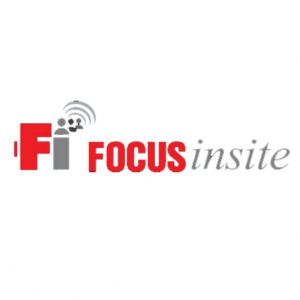Improving Focus Groups in 3 Steps
Posted by Focus Insite on December 18th, 2019
Qualitative research consultants rely on a number of proven methodologies when conducting market research. Focus groups are well-known and well-loved because they consistently provide researchers with reams of valuable insights. While focus groups may seem ‘analog’ in a ‘digital’ age, this methodology remains popular because they are tried and true. This doesn’t mean, however, that they are easy to pull together. A lot of behind-the-scenes planning is required in order to conduct a successful focus group. The ‘secret sauce’ to effective focus group outcomes is recruiting the best participants, which is why a participant recruitment agency is often employed.
Companies with dedicated product and marketing teams often outsource market research to nationwide qualitative research firms. The best outcomes are usually achieved when qualitative market research is done by a professional, neutral research company. For small companies or start-ups, it isn’t always possible to outsource market research to the professionals. The following three steps will outline what companies can do if they attempt to conduct focus groups on their own.
Step #1: Neutral territory
If your market research objective is to solicit input regarding your brand/product and you are considering hosting a focus group at your office, think again! This is a textbook example of bias creep. You’ll unwittingly bias the results of your study if participants know that the entity hosting and conducting the focus group is also the subject of the study. Participants need to speak openly and honestly and they’re more likely to self-censor if they know the host is also the subject.
Focus groups should always be held in a neutral setting. Hotel conference rooms and co-working spaces are good options for neutral places to host a focus group. Be sure to avoid wearing company logos and, if possible, make sure all communication with participants is conducted using a non-company email. Hiring a focus group recruitment agency will save your company money and time. Professional recruiters manage screening, scheduling, and remuneration. A word of caution: recruiting is time and energy intensive. Outsourcing this vital component of market research will save a lot of headaches!
Step #2: Don’t overlook the importance of a discussion guide
You would be hard pressed to mind a professional focus group moderator who is extemporaneous when conducting focus groups. Qualitative research consultants spend a lot of time developing discussion guides. These aren’t rigid scripts, the operative word is ‘guide’. Conversations often take unexpected turns, and the moderator relies on the guide to help give structure to the conversations.
Writing a discussion guide is a collaborative effort. Your team needs to first clearly outline the goals and objectives of your market research study. What are you hoping to discover? Where might the opportunities and gaps present themselves? With these questions in mind, your team can begin to develop the discussion guide.
Successful focus groups are held to no more than two hours. You can expect to cover three or four sections in this time frame, depending on the complexity of the topic. The arc of your questions should go from general to specific and always be open-ended. Allow time for follow-up questions, as a lot can be discovered during these conversations. After the discussion guide is completed, the moderator should memorize it and be familiar with the flow. Focus groups aren’t a stage-play and participants will bring up topics that may be addressed later in the discussion guide. The flow of conversation will be severely curtailed if the moderator jumps all around rather than follow the lead of the conversations. Think of moderating as being a director. You want to make sure all the points are covered, but conversations need to be led and directed so a coherent pattern can be discovered.
Step #3: Record your sessions for later analysis
Step three is important. Make sure you capture, either by video or audio, your focus group session. Focus groups generate copious amounts of information and it’s impossible to capture this by note-taking. Video recording focus group sessions is the preferred choice, as the qualitative research consultant can look for visual cues in body language and expressions. To properly synthesize all the data, it’s best to transcribe each focus group session. It isn’t uncommon for each transcribed focus group to be 50+ pages in length. Multiply this by a few different focus group sessions, and you’re talking hundreds of pages. Analyzing the data is time consuming, and we recommend budgeting a few weeks to properly comb through the transcripts and identify the patterns and insights.
Certainly, it’s possible to conduct focus groups without hiring a nationwide recruitment agency or research firm. If trying to conduct focus groups using internal teams, make sure to appoint two to three senior-level employees to the team. Another area to pay close attention to if managing focus groups internally, beware of inadvertently leading participants to answer questions the way you want to hear them. Employees have experience with the product, brand, or processes in a way that outsiders don’t. When crafting the discussion guide, be aware of how questions are phrased so as to not bias the answers.
While it’s always best to hire a market research recruiting firm to help manage focus groups, we realize this isn’t always possible. Follow these three steps and you’ll likely have better outcomes with internally led focus groups.
Want to learn more about recruiting for focus groups? Contact us here.


